
A7_Microfluidics_fundamentals_I
.pdf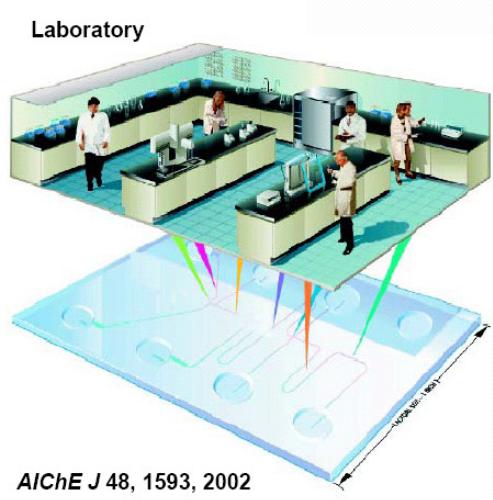
A7 Microfluidics I
Lab-on-a-chip
µTAS: micro-total- analysis systems
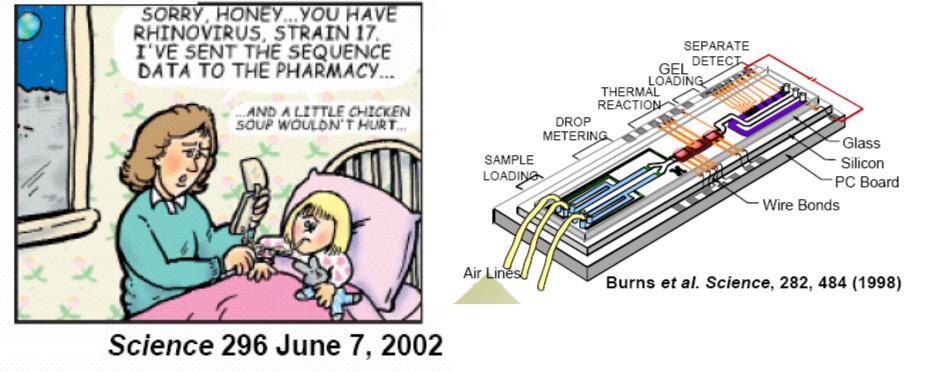
Lab-on-a-chip
Biomedical systems

Microreactor technology
Chemical
Engineering
Klavs Jensen, MIT ChemE
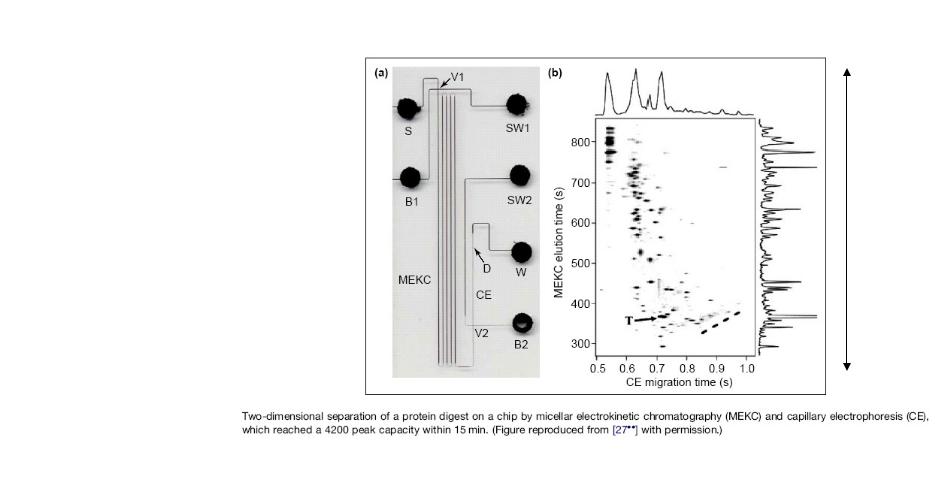
Chemical and Biological Microsystems
on-going revolution in miniaturized analytical systems, biomedical devices, tools for chemistry and biochemistry, systems for fundamental research
Macro→Micro |
Lab-on-a-chip, µTAS |
|
• Low sample consumption |
||
channels: 10-100 m wide, ~10 m deep |
||
• Fast analysis times |
||
|
||
• High throughput screening |
glass chip |
|
|
||
of catalysts and process |
|
|
chemistries |
|
|
• Possibility of efficient data |
|
|
integration and automation |
5 cm |
|
|
•Allow single-use devices
•Incorporation of sample preparation and product purification elements
•Massively parallel microfabrication
•Ease of making different designs
• Replicate essays in same |
J.D. Ramsey et al., Anal. Chem 75, 3758 (2003) |
|
device possible |
||
|
Difficulties: mixing, number of species present in very small volumes, surface effects
Different regimes of flow
|
|
Knudsen number, KN |
|
|
|
λ is the mean free path |
|
|
λ |
- Kn < 0.01 flow described by the Navier-Stokes equations |
|
KN = |
- 0.01 < Kn < 0.3 slip regime: NS equations can be applied to the flow |
||
|
Lbut at the surface, the fluid “slips” – these last molecular layers have a velocity different from that of the surface
-0.3 < Kn first ammend, and then replace NS equations by the Boltzmann equations
Effect of slip more important for gases and for narrow channels
-for gases, the limit is L ~ 1 m
-for liquids, the continuum hypothesis is applicable to most microsystems

Navier-Stokes
Momentum conservation - Navier-Stokes Eq.
Mass conservation
Reynolds number
U – characteristic velocity of the fluid l – characteristic length
υ - kinematic viscosity
if U ≤ cm.s-1, L ~ 10’s of m Re in microfluidic systems ≤ 0.1
flow of a low Re incompressible |
P constant at |
|
Newtonian fluid along a microcanal |
1 bar or a fraction of |
|
a bar |
||
characterized by the scale l |
||
|

Microhydrodynamics – the Stokes equations
Flows of incompressible Newtonian fluids at small
Re are governed by the Stokes equation
To obtain the Stokes equation, the
inertial terms in NS are considered negligible with respect to the viscous terms (Re small)
Flows governed by the Stokes equation have the following properties:
•linearity
•reversibility
•minimum of dissipation
•uniqueness
•reciprocity
•time-independence but
- not trivial to design a fluid mixer (no mechanism except diffusion present to mix 2 different fluids
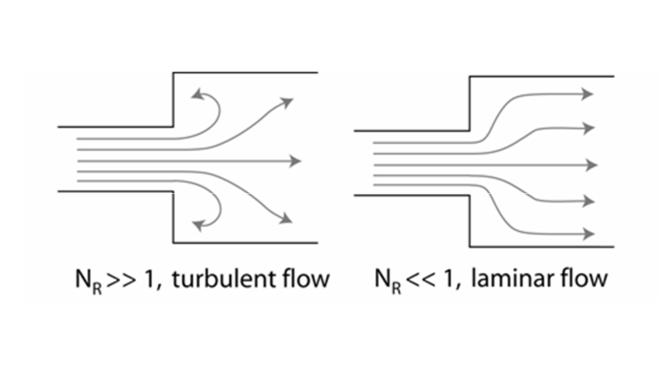
Laminar flow in microfludics
High and Low Reynolds number fluidics. When the Reynolds number is low, viscous interaction between the wall and the fluid is strong, and there are no turbulences or vortices.
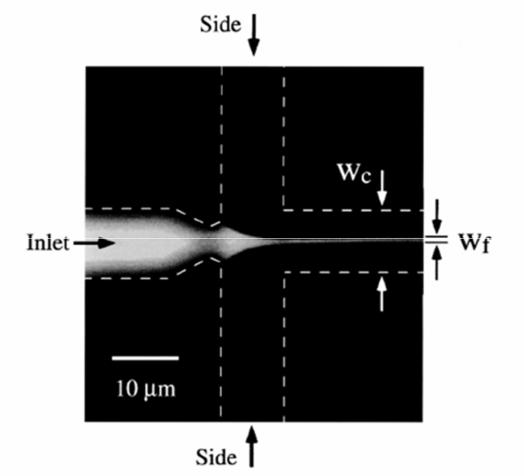
Laminar flow in microfluidics
Diffusion time ~ (distance)2/(diffusion constant)
Diffusion is very efficient in a short length scale
Hydrodynamic focusing of a liquid stream in a microfluidic channel.
Fluid containing fluorescent molecules is driven from the inlet to meet with two other nonfluorescent liquid streams from the side channels. The width of the liquid stream can be controlled by changing the pressures applied to side and inlet channels.
In the microchannel, only diffusional mixing can occur, and by narrowing down inlet stream width (wf) one can achieve fast diffusional mixing.
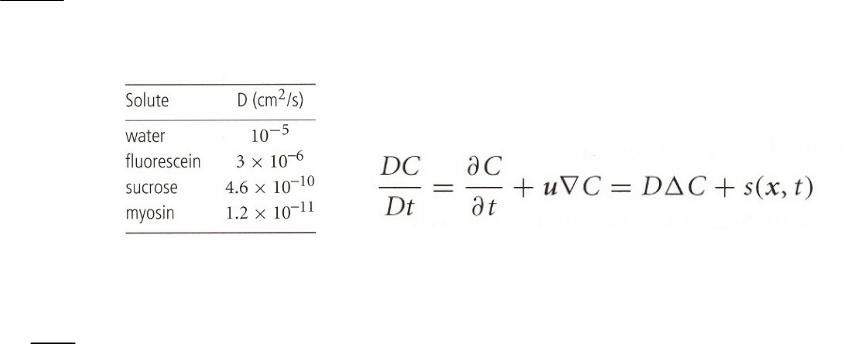
Diffusion in microsystems
KT
D =
6πRµ
molecules diffusing in water at 20ºC
PE = UL D
Stokes-Einstein formula: estimates diffusion coefficient D based on the size of the diffusing molecule R and the fluid viscosity
Advection-diffusion equation
Peclet number, PE: U is a characteristic flow velocity, l is the size of the system, D is the diffusion coefficient
Pe measures the relative importance of advection with respect to diffusion
Pe ~ l2 Diffuson becomes dominant at smaller scales
(assuming a fixed pressure difference between the ordinary world and the miniaturized world)
